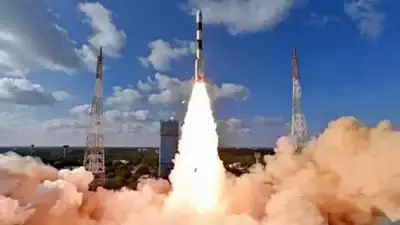
Bangalore: YisroIt has long planned to split satellites and then reassemble them in space as part of a space docking experiment (Spadix) mission, we hope to achieve it by mid-December.
Somanath, chairman of the Indian Space Research Organization, told the Times of India in an exclusive interview: “Docking is an integral part of the plan. Chandrayaan 4 Spadex is our planned predecessor. It will be completed within a month. It will then undergo comprehensive testing, simulation demonstrations, and more. We hope to release it by December 15th.
Spadex will be ISRO’s first mission to master the docking technology, which will be critical not only for the Chandrayaan-4 sample return mission, but also for all future manned space missions and proposed space station projects. Somanath added that the preliminary design review (PDR) of Chandrayaan-4 is yet to be completed
As first reported by The Times of India , the Spadex satellite will be launched as two separate components that will then rendezvous and dock in space to form a fully functional unit. These capabilities – which allow spacecraft to position each other and maintain the same orbit – are critical to India’s long-term goal of establishing its own space station.
Controlled descent of TV-D2
Additionally, ISRO is gearing up for several key missions as part of its will be like this plan, hoping to achieve at least two by the end of this year – the second test vehicle demonstration (TV-D2) and the first unmanned flight mission (G1), the simultaneous integrated airdrop test (IADT) and the launch pad abort operation test ( PAT) is also in progress.
“Unlike last time, this time (TV-D2) will have propulsion. There needs to be controlled thrusters because we want to reach Mach 2 conditions, so higher aerodynamic conditions need to be controlled. Otherwise, the aerodynamics Controls will not be fully realized. This is a change, except for propellant loading and mission design,” Somanath said.
The aircraft is ready and has been moved to the space port, while the manned module integration is underway at the UR Rao Space Center (URSC) in Bengaluru.
New freezing stage, Viomitra with the european life sciences society
“For G1, the rocket has already arrived at the spaceport. Both S200 (boosters) are ready, while the L110 (Vikas engine) arrived three months ago. The launch vehicle will carry a new cryogenic stage C -32, instead of the longer and different version of the C-25. The stage was set for the first time for Gaganyaan. Last week (September) it was completed with the entire propellant load model – it was taken to the launch pad. All stuffed to try and bring back,” Somanath said.
He said that ISRO is fully ready with the rocket. The crew module is in the integration (propulsion and mechanical systems) stage at Vikram Sarabhai Space Center (VSSC) and service module wiring is being done at URSC. “So, the items are here now. The crew escape system is ready and has been moved to the spaceport,” he added.
Somanath reiterated that G1 will carry the semi-humanoid robot Vyomitra and said the mission will also carry an atmospheric engineering model of the Environmental Control and Life Support System (ECLSS). “We have different designs to test it. One seat will be equipped with Vyomitra, one seat will be equipped with ECLSS. That’s the large-scale simulation model,” he said.
He emphasized that work on G1, TV-D2, Pad Abort Test (PAT) and Integrated Air-Drop Test (IADT) are in progress simultaneously.
While G1 is prioritized, followed by TV-D2, Somanath said: “There are hundreds of inputs — electronics, software, hardware, and there are many to consider. For example, IADT has links to IAF and helicopter availability, TV-D2 There are limitations to where certain propulsion system integrations can be done, so I’m not saying that that has to happen first.







